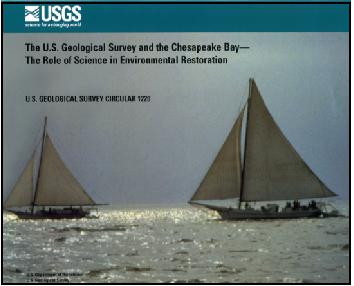
Product Details
- Product Number
- 112991
- Series
- CIR-1220
- Scale
- NO SCALE
- Alternate ID
- 21-1220
- ISBN
- 978-0-607-98489-7
- Authors
- EDITED BY PHILLIPS, S. W.
- Version Date
- 01/01/2002
- Countries
- USA
- Media
- Paper
- Format
- Bound
Additional Details
- Description
- Designated a National Monument by President Dwight D. Eisenhower in 1961, and a National Historical Park by President Richard M. Nixon in 1971, the Chesapeake and Ohio Canal National Historical Park (herein referred to as the C&O Canal) is unique in that it is the only land within the National Park Service (NPS) system that crosses 5 physiographic provinces along a major river. From the Georgetown section of Washington, D.C., to Cumberland, Md., the C&O Canal provides an opportunity to examine the geologic history of the central Appalachian region and how the canal contributed to the development of this area. The different rock types and surficial deposits dictated the various construction methods for the canal, which was excavated in Quaternary flood-plain deposits as well as through bedrock. The ancient course of the Potomac River and the deposits it left behind also influenced the location of the canal and towpath. Engineers made good use of the many rock types to construct the locks, dams, aqueducts, and culverts that guided water from the Potomac River into the canal and maintained the water level as canal boats traveled between higher elevations in western Maryland to sea level in Washington, D.C. As the population in the Tidewater region grew and expanded westward, the Potomac River became one of the most viable means to cross the Appalachian Mountains to the fertile Ohio River valley and beyond. Over time the vision of an industrial corridor along the Potomac River did not happen and as a result the Chesapeake and Ohio Canal National Historic Park is a river valley nearly restored to its natural state in the backyard of the Nation#s capital. As the population in the Tidewater region grew and expanded westward, the Potomac River became one of the most viable means to cross the Appalachian Mountains to the fertile Ohio River valley and beyond. Over time the vision of an industrial corridor along the Potomac River did not happen and as a result the Chesapeake and Ohio Canal National Historic Park is a river valley nearly restored to its natural state in the backyard of the Nation#s capital. The report and map cover the entire park within an area that is 184.5 mi long and 2 mi wide. The geologic guide is presented as if traveling the canal from east to west, from Georgetown to Cumberland, by provinces and sections, such as the Piedmont. Included in the guide are references to detailed geologic information. Additional historical information is found in other guidebooks of the C&O Canal.
- Survey Date
- 2002
- Print Date
- 2002
- Languages
- English
Related Items




